Fresh Ways to Arrive in Style in New York City for Yankees and Mets Games
- Ken Smoller

- Apr 10, 2023
- 17 min read
Updated: Apr 16, 2023


For much of American sports history, New York City has been the epicenter of baseball. The apex was during the so-called “Golden Era” in the mid-20th Century when the World Series routinely was played at either Yankee Stadium in the Bronx, the Polo Grounds in upper Manhattan (home of the New York Baseball Giants) and at Ebbets Field in Brooklyn (home of the Dodgers). New York traded (actually lost) the Dodgers and Giants to the California in 1958 for a team to be named later. That replacement team was the expansion New York Mets, which began its life in 1962 at the Polo Grounds before moving to Shea Stadium in 1964 in the Flushing neighborhood of Queens.
Since then, both major league ballparks have been demolished and replaced by shiny new versions mere steps from their lost predecessors. Each year, over 5.5 million fans take in a major league game in NYC, not to mention the 300,000 more who attend games at its two minor league parks. Most of these fans are taken out to the ballpark via the subway, but today there are a new exciting and fashionable ways to arrive in style in NYC for baseball games. Each of these new options not only meld modernity, but also embrace the essence of travel from Gotham’s bygone days.
The New York City subway system remains the way that most baseball fans arrive at the ballparks in the outer boroughs of the City.
The Ebbets Field apartments in Brooklyn and the Polo Grounds Towers in upper Manhattan are the residential reminders of the great ballparks that once stood in their stead.
Before exploring the future of ballpark travel, it is worth taking a look back at the ghosts of ballparks’ past. Perhaps the most famous ballpark in the world was the first baseball “Stadium” ever built. The original Yankee Stadium was constructed in the South Bronx and opened in 1923. The Yankees previously had played as the New York Highlanders at Hilltop Park in the Washington Heights neighborhood of Manhattan during 1903 to 1912 and as the New York Giants’ tenant at the Polo Grounds from 1913 to 1922.
After star slugger Babe Ruth and the Yanks started to outdraw the Giants, their owner Charles Stoneham gave Bombers the boot and the “House that Ruth Built” was erected just across the Harlem River. That original Yankee Stadium was later gut renovated by convicted felon/team owner George Steinbrenner in 1974-1975. During the rehab, the Bronx Bombers shared Shea Stadium with the Mets and Jet. The general shape of the original Stadium remained, but the structure was practically rebuilt during the two year project that cost at least $57 Million in 1974 dollars (about $350 Million today).
Scenes of old Yankee Stadium during its final month in September 2008.
The Yankees enjoyed unprecedented to success during their years at old Yankee Stadium, winning 26 World Series during that era. During its final years, the Stadium witnessed the Derek Jeter fueled dominance. After failing to snap their unusual eighteen-year title drought during the Don Mattingly era, a line of stars including Jeter, Andy Pettitte, David Cone, Jorge Posada, Bernie Williams, Mariano Rivera and Alex Rodriguez (well, maybe not A-Rod) helped to close out Yankee Stadium in substantially in style.
Clockwise from Top Left: Rookie Derek Jeter and the Yankees are introduced before Game 1 of the 1996 ALCS against the Orioles; the Yankee’s 1996 World Series tickertape parade down the “Canyon of Heroes”; late superfan Freddy “Sez” bangs his pan in support of the Bronx Bombers; Third basemen Alex Rodriguez bats in Yankee Stadium’s final year; Shortstop Derek Jeter patrols the diamond; Pitcher Andy Pettite and late pitching coach Mel Stottlemyre in 1996 ALCS; Don Mattingly Day in 1997.
In the mid aughts, both the Mets and Yankees secured approvals to build new ballparks next to their respective current homes. During old Yankee Stadium’s curtain call season of 2008, new Yankee Stadium started to lurk over its shoulder. During it was final season, the denizens of the upper deck of Yankee Stadium 1.0 could easily see that Yankee Stadium 2.0* would be a huge upgrade loaded with modern ballpark conveniences. Most significantly, fans would no longer have to crawl through the faded glory of the maze of old Yankee Stadium’s meandering narrow concourses.
*Arguably, the 1974-5 Yankee Stadium near total rebuild means that the 2009 version actually qualifies as Yankee Stadium 3.0.
During its final season, Yankee fans could track the construction progress of the new Yankee Stadium across the street from leftfield of old Yankee Stadium, and easily visible from the upper deck. Old Yankee Stadium’s concourses were a mixture of faded elegance, dense pedestrian traffic and confusion.
The Bronx Bombers ended their final season at Yankee Stadium in 2008 with a thud and missed the playoffs. Tradition then yielded to progress and the House that Ruth Built soon met the wrecking ball. Once fully demolished, the 138 foot Louisville Slugger bat that shrouded a Stadium smoke stack since the 1974-5 rebuild was the one constant that remained.
Before and After photos of old Yankee Stadium as viewed from the home plate and rightfield gates; Fans snuck a peek of the demolition process in 2009; a subway map at the 161st Street stop shows the current lay of the land.
As a White Sox fan from birth, and a “Bostonian” for over two decades, I jealously admired the “Pinstriper’s” perennial success from afar. Beyond just baseball, both Boston and New York City evolved from their colonial roots into decidedly distinct cities. Starting in August 2021, the small airline Tailwind connected the two rival cities in a way that captures the early glory days of air travel – a seaplane. While a bit more expensive than other options such as the Peter Pan, Amtrak or a typical commercial airline shuttle, it offers a totally different experience. It is part transportation, part amusement park ride and part aerial tour. In my case, my buddy tempted me with a “2 for 1” promotion and a Yankees-Rays game as our ostensible destination. Instead of starting our trip at Logan Airport or South Station, we checked in for our seaplane at the mini-terminal at the Fan Pier Marina on Boston Harbor in under 5 minutes. A short boat ride then took us across Boston Harbor to a moored dock where our flying chariot awaited us. After meeting our two pilots and a nice couple from San Francisco taking a quick joy ride, we hopped in our 8 seat plane (plus 2 pilot seats). Seconds later, we catapulted from the waves and over the Financial District, the North End, Beacon Hill, the Back Bay and beyond. Much to this stadium geek’s delight, we flew past TD Garden (home of the Celtics and Bruins), Fenway Park (home of the Red Sox, which was dressed up for a Jonas Brothers concert) and Boston College’s Alumni Stadium.
Clockwise from top left: TD Garden with the North End and Financial District beyond the arena; the small Tailwind terminal at Boston’s Fan Pier; the moored dock where passengers board the seaplane; Beacon Hill and Boston Common; Boston College’s Alumni Stadium; the interior of Tailwind’s CESSNA Caravan Amphibian; the Back Bay and South End of Boston; Fenway Park set up for a Jonas Brothers Concert.
The 75 minute passage was unlike any flight I had ever taken. For starters, the noise and vibration were a wee more impactful than a typical airplane, but not to the point of discomfort. Unlike big boy planes, we flew at a lower 10,000 feet cruising altitude. As a result, we had a greater ability to discern landmarks on the ground, despite unwelcome low cloud cover spoiling the fun intermittently. The shifting sun glare on the thick windows of the Cessna Caravan Amphibian generated a natural Instagram filter on each photograph I snapped. Luckily, the clouds parted enough to capture shots of my current hometown of Brookline, MA, the Yale Bowl in New Haven, the US Merchants Marine Academy football stadium, new gaudy Gilded Age-style mansions of the North Shore of Long Island, the Throgs Neck Bridge and much more. Despite the fickle sky, it was a photographer’s dream voyage.
Clockwise from top left: New Haven, CT and the Yale athletic campus; Coolidge Corner in Brookline, MA; the Throgs Neck Bridge, the Tailwind pilot and co-pilot guiding our seaplane towards the East River, Mansions on the North Shore of Long Island; the US Merchants Marine Academy football stadium.
As we approached the Big Apple, the landmarks were coming faster than I could capture with my camera. We traversed Queens and Brooklyn, highlighted by a Goodyear Blimp’s eye view of the Mets’ Citi Field and the USTA Billie Jean King Tennis Center (home of the US Open). The seaplane arced over the Brooklyn Bridge and slowly glided down adjacent to the shimmering skyscrapers of Manhattan. Despite having lived there in my 20s and visiting countless times, I had never viewed the New York from these angles. Before I had a chance to soak it all in, we splashed down in the East River with the elegance of Captain Sully Sullenberger minus the goose.
The CESSNA seaplane provided a completely novel way to arrive in downtown Manhattan, with amazing views of the landmarks of New York.
Just seconds after our watery touchdown, the CESSNA glided over to small pier at the Skyport Marina on East 23rd Street and we disembarked with little fanfare. We rolled our suitcases down the street and continued our New York baseball adventure. The Cessna took off for its return trip to Boston Harbor behind us as we jumped in a taxi to our hotel.
Since I was taking photos and video simulatniously, this video is a slightly shaky view of our water landing.
For those who prefer terrestrial travel, a new underground experience provides a whole different perspective on New York. Not far from the 9-11 Memorial & Museum, a new transportation hub has risen. The World Trade Center Oculus, designed by Santiago Calatrava, opened in 2016 in downtown Manhattan. It is a junction for the New Jersey Path trains and a dozen subway lines, connected to an expansive indoor mall. In additional to being the subterranean entryway into Manhattan, it has direct access to a pigeon’s-eye view of all five boroughs on the 102nd floor of One World Trade Center (aka the “Freedom Tower”). Be prepared for long lines, even with prepaid tickets.
Both the Oculus transportation hub and Freedom Tower observation deck are two relatively new “can’t miss” landmarks in Downtown Manhattan.
A seaplane may get baseball fans to Manhattan, but one still need to get oneself to Yankee Stadium. Hailing a taxi may seem to be the most convenient option, however, the subway retains the crown for speed, cost and efficiency. The 161st Street subway stop is in the shadow of new Yankee Stadium and mere steps to the gate.
Despite the apparent convenience of hailing a taxi, the subway is the most logical transport choice for Yankee Stadium. (Note: Taxi hailing photo credit goes to Mrs. Stadium Vagabond)
Old Yankee Stadium may be just be a memory, but fans can still get a sense of the “Cathedral of Baseball” with various tangible reminders where the Stadium once stood. Specifically, the City splurged and spent $50.8 Million in 2012 on the 10.8 acre Heritage Field on the site to replace the parkland lost with the construction of new Yankee Stadium. The new field overlaps the original Yankee Stadium turf, albeit slightly askew from the original field dimensions as shown in blue markings on the turf. Various commemorative plaques, signs, quotations and viewfinder images encircling the field evoke the old Stadium’s glory days. The only true vestige of the former shrine is a 12 ton portion of the old Yankee Stadium frieze on display in deep right field. Despite the absence of tangible relics, fans can sense the aura of the ghosts of old Bronx Bombers who played on this spot along with the ghost of the ballpark itself.
The $50.8 Million Heritage Field opened in 2012 on the site of old Yankee Stadium and contains myriad reminders of “The House the Ruth Built.”
Heritage Field recalls the history of old Yankee Stadium with various commemorations and new Yankee Stadium’s design itself honors the overall essence of its predecessor. Essentially, the architects built an updated interpretation of the original 1923 Yankee Stadium, but infusing it with modern ballpark amenities. The facsimile of the original iconic frieze along the upper deck roof line is the most successful element. Although not a total recreation, new Yankee Stadium’s good faith attempt to emulate old Yankee Stadium vastly improves on the various replacements for classic ballparks like Comiskey Park, Tiger Stadium, Crosley Field, Sportsman’s Park and Forbes Field.
Deserved kudos aside, the Steinbrenners created a Disneyesque sanitized version of the “Bronx Zoo” in the same way that modern Times Square burnished its unsavory reputation. Its biggest bougee blemish is the Legend’s Suite behind homeplate, whose typically empty cushioned seats are separated by an unsightly “moat“. Perhaps a suite that “is curated for those who demand the best in baseball” needs to keep the unwashed masses of the MVP Club ticketholders at bay.
Although a slightly sanitized interpretation, new Yankee Stadium mimics old Yankee Stadium’s overall design.
There are tangible and figurative reminders of the “House that Ruth Built” all over new Yankee Stadium. A treasure trove of trophies and memorabilia fill the New York Yankees Museum on the main level in rightfield. Additionally, various old Yankee Stadium remnants and photographs are liberally sprinkled throughout the concourses, reminding fans of the Bronx Bombers’ illustrious past.
New Yankee Stadium has many reminders of old Yankee Stadium throughout the ballpark, especially in the museum in right field.
The most significant link between old and new Yankee Stadiums is Monument Park beyond centerfield. This old tradition, which is part “hall of fame”, part memorial, dates back to Yankee manager Miller Huggins’ 1929 death. The Park opens when the Stadium’s gates open on game days and closes 45 minutes before first pitch.
There is a reverent hushed tone amongst the typically dense throngs of Yankee faithful. Fear not, two huge tributes to the late George Steinbrenner’s ego in Monument Park and over the nearby bleachers will obnoxiously overcome any sentimentality you might feel. Nevertheless, even if you grew up enviously loathing the “Damn Yankees“, it is well worth the detour and hassle of an early arrival at the ballpark.
Monument Park in centerfield is long standing tradition that migrated from old Yankee Stadium to its replacement across 161st Street.
The ambience in the stands of new Yankee Stadium does not entirely capture the electricity of its ghost across the street, nor has the action on the field. Since moving across 161st Street in 2009, the Yankees sole World Series title was is in the new Stadium’s inaugural year. To keep new Yankee Stadium a worthwhile destination for baseball fans, the son of Steinbrenner will flash just enough cash for free agents and other stars to try to catch the four 21st Century titles of the rival Red Sox.
New Yankee Stadium has stars like slugger Aaron Judge on the field and eclectic fans off the field.
When traveling to New York’s ballparks or throughout the Big Apple, one inevitably passes through one of its two major train stations. In recent years, both stations have been substantially upgraded. On the West Side, Penn Station’s underground bunker terminal has long been an inferior replacement for the demolished McKim, Mead, and White designed original Penn Station. After its demolition in 1963, there was an intense public outcry that helped spark the historic preservation movement.
After many years of planning, the historic preservation “wrong” has been partially righted by the opening of Moynihan Train Hall in a portion of the James A. Farley Post Office Building. The Farley building opened in 1914 and also was designed by McKim, Mead, and White as the intended sibling to the neighboring original Penn Station. Like new Yankee Stadium, Moynihan Train Hall is a somewhat sanitized interpretation of its predecessor, but decidedly a far more elegant entrance to Manhattan than the glorified rat maze underneath Madison Square Garden across the street. Beyond the main train hall, there is fascinating art on display, not to mention the still opulent grand post office lobby.
Clockwise from top left: The grand lobby of Moynihan Train Hall in the old Farley Post Office Building; Madison Square Garden, which sits on top of the current Penn Station and where the demolished old Penn Station was located; the 8th Avenue facade of the Farley Post Office/Moynihan Train Hall; the “The Hive” art installation at the Moynihan Train Hall; the lobby of the Farley Post Office.
Despite many attempts by developers, the original Grand Central Station on Park Avenue did succumb to a wrecking ball like old Penn Station. Still standing, Grand Central may be better than ever now that its mystifying celestial ceiling has been restored. The entire station exudes grandeur and transports passengers both to their destination and, briefly, to the romantic early days of train travel. Despite many Covid-related closures, the Grand Central Oyster Bar & Restaurant continues to shuck oysters under its vaulted ceilings as it has since 1913.
Despite its high value to real estate developers, Grand Central Station remains standing and in fine condition.
Whether it is from Penn Station via the Long Island Railroad, or Grand Central Station on the #7 Subway line, traveling on the rails to Mets games remains the most logical option. The Mets–Willets Point station is a short walk from both the Mets’ home and the USTA Billie Jean King National Tennis Center, site of the US Open. The “Metropolitans” have called this neighborhood its home since the opening of Shea Stadium in 1964.
Despite practically being an appendage to the LaGuardia airport runways, this location had long been targeted as a site for a multipurpose stadium by New York’s so-called “Master Builder” Robert Moses. As is expertly detailed by the hall of famer historian Robert Caro in his epic “Power Broker“, Moses had tried to wrangle the Brooklyn Dodgers into the future Shea site as part of his overall 1964 World’ Fair master plan. With the Dodgers decamping to Los Angeles, the Mets got sucked into the revving engines of Moses’ Willets Point plan and landed at Shea. The Mets were not alone, the New York Jets shared Shea Stadium from 1964-1983.
The Mets have called Flushing, Queens its home since it moved from the Polo Grounds to Shea Stadium in 1964.
Shea Stadium lacked the panache of Yankee Stadium, not to mention the championship pedigree. Although not as revered as Yankee Stadium, Shea had its own special character and loyal adherents. It two most famous quirks were its Home Run Apple and never-ending planes overhead en route to LaGuardia.
While not quite hallowed ground like Yankee Stadium, Shea Stadium had its share of fans and fervent adherents.
Whether one is a lifelong Mets fan from Astoria or an air traveler from across the globe, John F. Kennedy International Airport now has a landmark (sorry, the pun was too inviting) hotel to appeal to everyone visiting Queens. This hip new destination is the TWA Hotel, which originally premiered as the now-defunct airline’s terminal in 1962, the same year the expansion Mets debuted. The TWA Flight Center, designed by Finnish-American architect Eero Saarinen, was designated as a landmark by the City of New York in 1994 and included in the National Register of Historic Places in 2005. The terminal opened just in advance of the 1964 World’s Fair and reflected the futuristic optimism of the Sixties’ jet age.
The TWA Flight Center at JFK International Airport, designed by Finnish-American architect Eero Saarinen, has been transformed into a modern full-service hotel.
Other than its high prices and disinterested service, every aspect of hotel’s public spaces creates the illusion of time travel. One would expect to bump into Austin Powers or George Jetson gliding across the penny tiles towards the line of rotary phone booths, the retro photo booth or the oversized “Twister” room. The TWA Hotel’s house DJ selected an early 60s mix that enhances the illusion with a fitting mod soundtrack for guests lounging in the old terminal. Songs such as “These Boots are Made for Walking” and “Runaround Sue” will ring in your ears as you take in the art tributes to “Tab” diet cola or sip a cocktail on the restored 1958 Lockheed Constellation “Connie” airplane turned lounge (paradoxically, while likely staring at a smart phone).
Top L: The 1958 Lockheed Constellation “Connie” airplane turned lounge sits outside the hotel near a sheet of ice for curling; Bottom L: The hotel’s lobby has an oversized game of “Twister” for guests to enjoy; Bottom R: The 60s diet soda “Tab” is the star of an art exhibit in the TWA Hotel lobby.
If time travel to the 60s is not enough to entice baseball daytrippers or extended layover passengers, the rooftop pool and the Runway Chalet at the Pool Bar may be the clinchers. The deck affords guests and day pass holders spectacular views of the JFK Airport runways, the Eero Saarinen designed terminal and Manhattan off in the distance. With water heated to a temp of about 95°F (35°C) in winter, swimmers can enjoy the “pool-cuzzi” year round. To warm up after a dip, the Chalet provides the feel of an “apres-ski” lodge in the Alps.
The TWA Hotel’s pool and “apres-swim” Chalet are open year-round.
Besides the TWA Hotel, one of the most captivating and quirky sites in Queens is the Panorama of the City of New York, just a 10-15 minute walk from the Mets/Willets Point station near the landmark Unisphere. The exhibit is part of the Queens Museum, which was originally built for the 1939 New York World’s Fair and briefly functioned as the United Nations General Assembly. The Panorama is the entire city “built to a scale of 1:1200 where one inch equals 100 feet”. Originally constructed for the 1964 World’s Fair at the behest of Robert Moses, it has been updated with current buildings since 2009.
The Panorama of the City of New York is the prime attraction at the Queens Museum nearby the USTA Billie Jean King Center and 1964 World’s Fair Unisphere.
Instead of emulating the utilitarian Shea Stadium, Citi Field instead pays homage to the beloved Ebbets Field. The ballpark’s facade is evocative of the look of Ebbets, while its entryway Jackie Robinson Rotunda pays tribute to the most historic Brooklyn Dodger. Additionally, Citi Field’s double-deck left field grandstand is a loose interpretation of the seating bowl that once stood in Flatbush. It is not the jewel box that Ebbets Field used to be, yet Citi Field is huge upgrade over Shea in almost every way.
The Mets’ Citi Field pays tribute to the long gone Brooklyn Dodgers and Ebbets Field in its facade, Jackie Robinson Rotunda and left field grandstand. Naturally, Mr. Met made the move from Shea Stadium to Citi Field.
Purchase this New York Mets Canvas or Poster from our store!
Other than the continued presence of LaGuardia runway noise, Citi Field echoes Shea Stadium in other ways. The old Shea Home Run Apple was relocated to the Citi Field main gate. Citi Field upgraded the celebratory fruit with a shiny new double-size apple that still whack-a-moles above the centerfield wall after each Met homer. To keep the sprit of the Amazing Mets alive, Mr. and Mrs. Met continue to entertain fans.
Citi Field carried forward Shea Stadium traditions such as the Home Run Apple and Mr. & Mrs. Met.
For a more modest baseball experience, fans can take in a game at one of the City’s two minor league ballparks. The Atlantic League’s Staten Island Ferryhawks play on the waterfront near the Staten Island Ferry terminal. Their Staten Island University Hospital Community Park has an amazing view of the Manhattan Skyline, the Statue of Liberty and New York Harbor.
The Met’s High A affiliate Brooklyn Cyclones play at the equally picturesque Ballpark on the Boardwalk in Coney Island (formerly Maimonides Park, MCU Park and KeySpan Park). As extensively detailed in an earlier post, the Coney Island ballpark has played host to the Nathan’s Famous July 4th Hot Dog Eating Competition.
Starting Top: The Staten Island Ferry provides a free trip to New York’s smallest borough along with priceless views of New York harbor; Middle R: The view of Manhattan’s skyline from the Staten Island Ferryhawks’ SIUHC Park; Bottom: The Brooklyn’s Cyclone’s Ballpark on the Boardwalk in Coney Island.
Across the Hudson River in Newark, New Jersey, Bears & Eagles Riverfront Stadium once was home to the independent Newark Bears. The park stood from 1999 until 2013, and was demolished in 2019. The Bears were known for signing aging star players to draw fans, including a 45 year old Rickey Henderson in 2003. The Hall of Famer’s batting stance changed from his glory days on the Oakland A’s, but he still played the game enough intensity that he signed for the LA Dodgers after his Bears’ stint.
Newark’s now-demolished Bears & Eagles Riverfront Stadium briefly was home to minor league Newark Bears and their cadre of aging superstars.
But I digress… Yankee Stadium may be New York’s iconic sports venue, while Radio City Music Hall has been one of the City’s iconic entertainment venues since 1932. For a brief period, the two forms of entertainment merged and Radio City briefly became a “stadium”. When the Republican National Convention took over Madison Square Garden in 2004, the WNBA’s New York Liberty needed a temporary arena. The Liberty played the stage normally occupied by the Rockettes for six games on a court that barely fit into the famous theater. |
Radio City Music Hall normally hosts musical acts such as the Phish offshoot Trey Anastasio Band, but was briefly a basketball arena in 2004 for the New York Liberty.
Back in the 1990s, civic leaders and the Yankees considered relocating the team to Manhattan’s West Side, just a few blocks away from Radio City. Instead, the team stayed put in the South Bronx and an entirely different development emerged on the West Side. The Hudson Yards project now occupies 28 acres of land that was once considered as a site for the New York Jets’ stadium and the 2012 Olympics main stadium. Instead, Hudson Yard’s signature element is the 16 story “Vessel” designed by Thomas Heatherwick. Visitors used to be able to climb to the top until a jumping problem shut down the practice as safety elements could be evaluated. For a different perspective of the West Side of Manhattan and beyond, visit the new Edge sky deck on the 100th floor at 30 Hudson Yards.
The Edge at Hudson Yard has amazing views of Manhattan and beyond from its 100th floor open air observation deck. Middle: The signature landmark at the Hudson Yards development is the “Vessel” designed by Thomas Heatherwick.
Whether it for baseball, a Broadway show, museums or dining out, traveling to and around “The City that Never Sleeps” is constantly evolving. One odd constant is that our thirst for modernity blends with our yearning for the past. In the case of the Tailwind seaplane and the TWA Hotel, what was once old is new again. Similarly, the state of the art modern ballparks for the Yankees and Mets seek to remind fans of ballparks lost. New York’s constant metamorphosis creates the need for repeat visits and new adventures.
All photographs and text by Ken Smoller. ©2023 Stadium Vagabond – All Rights Reserved.




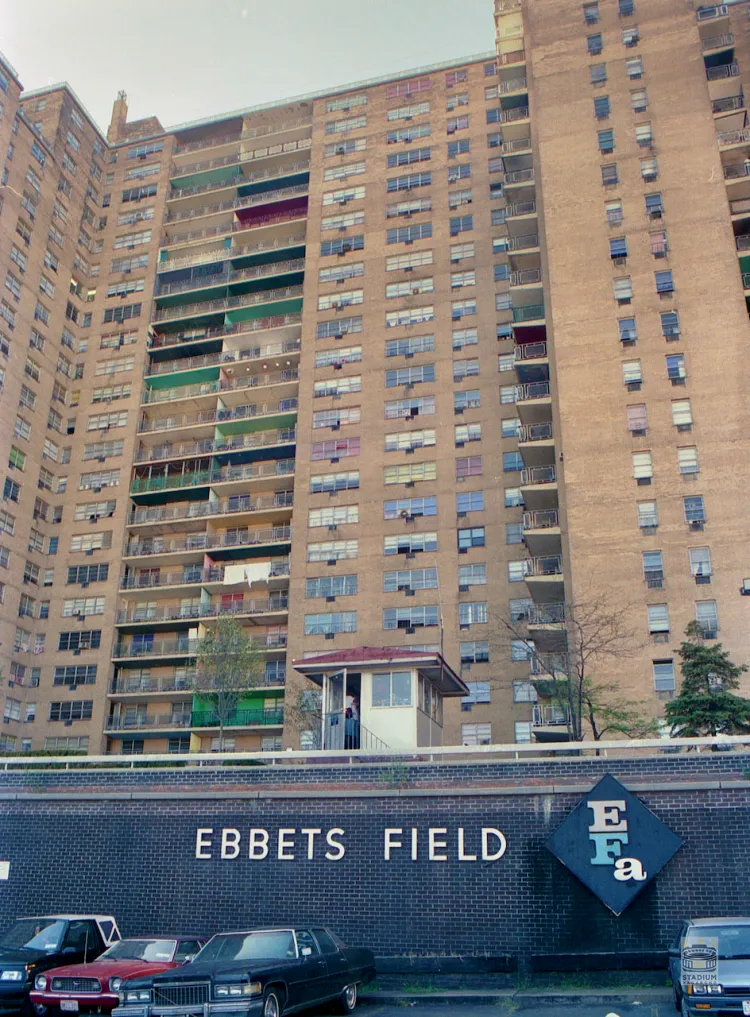







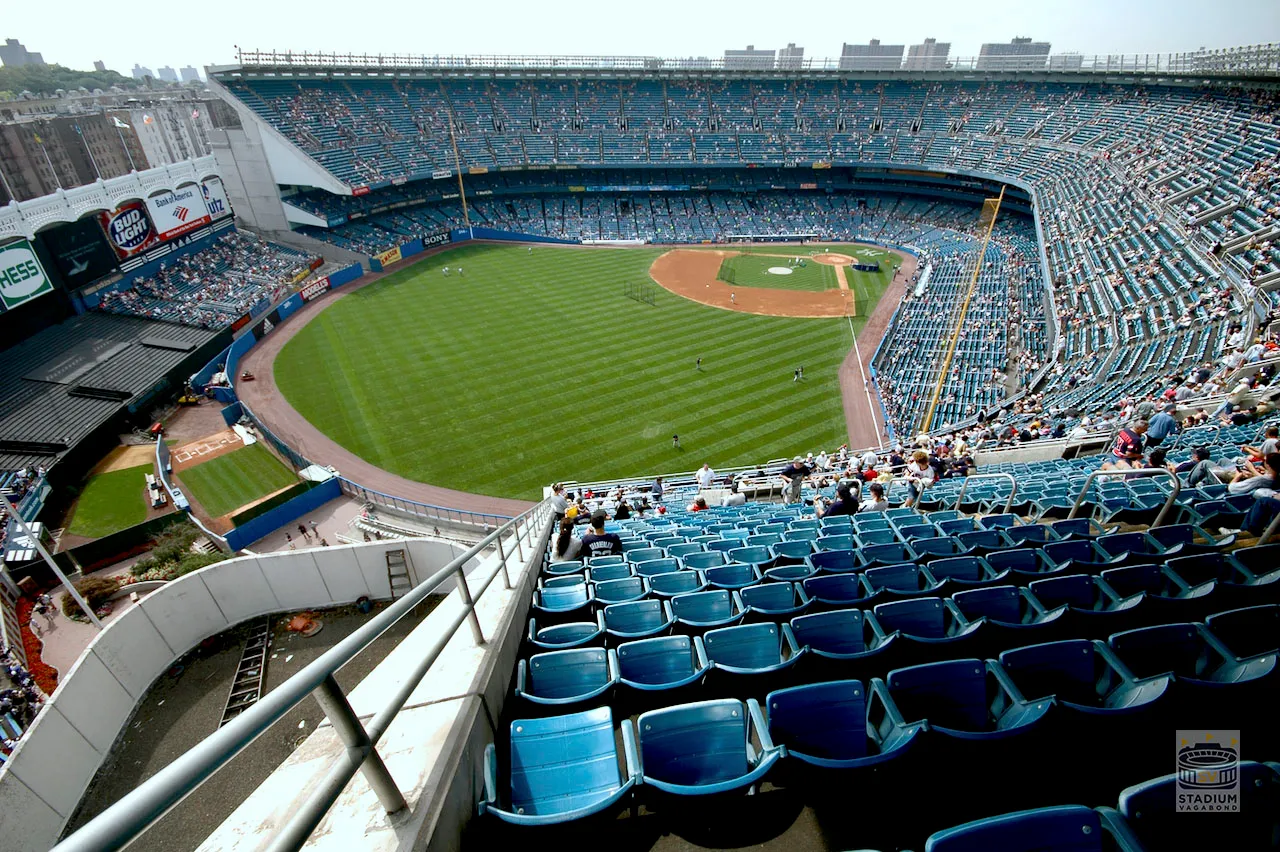



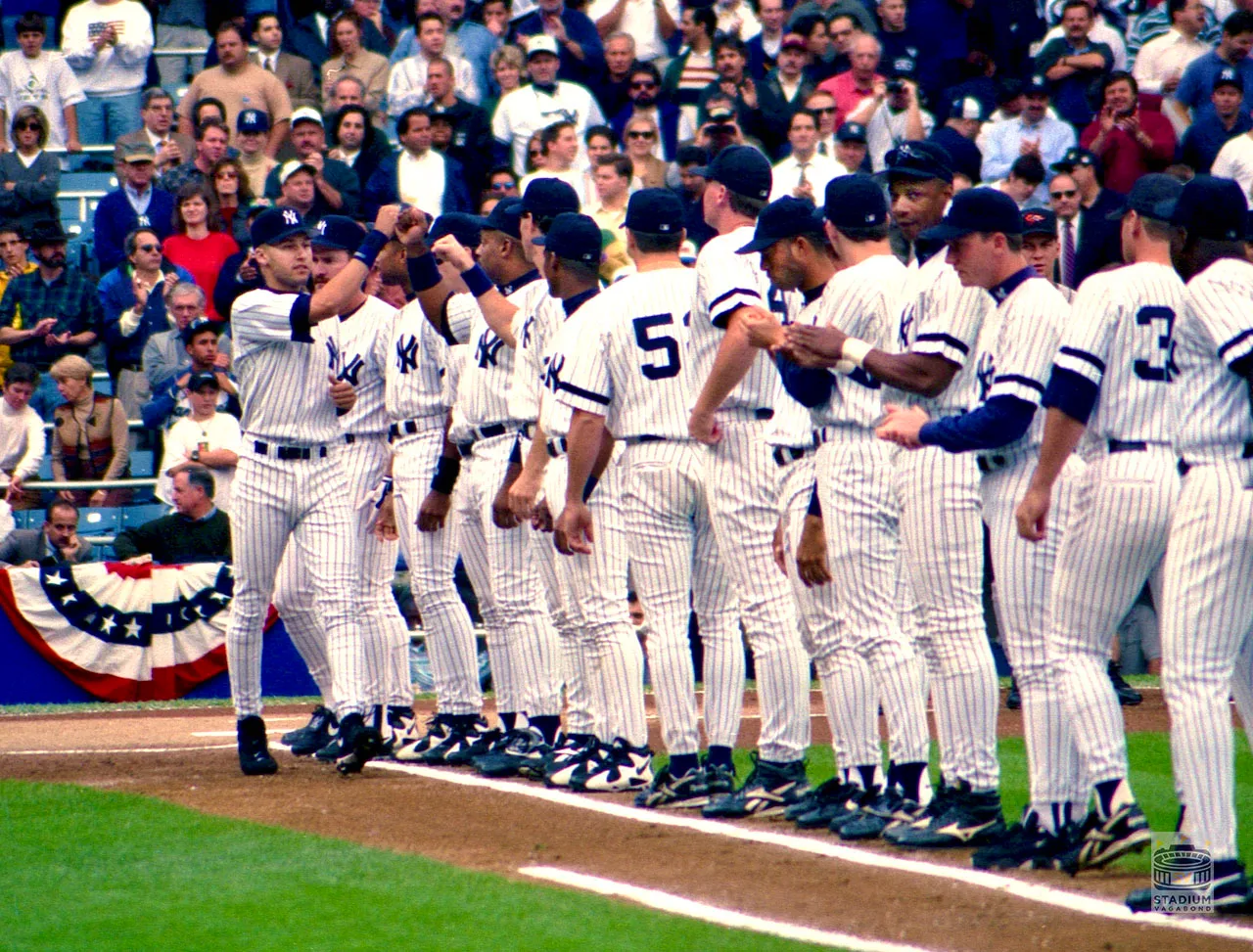

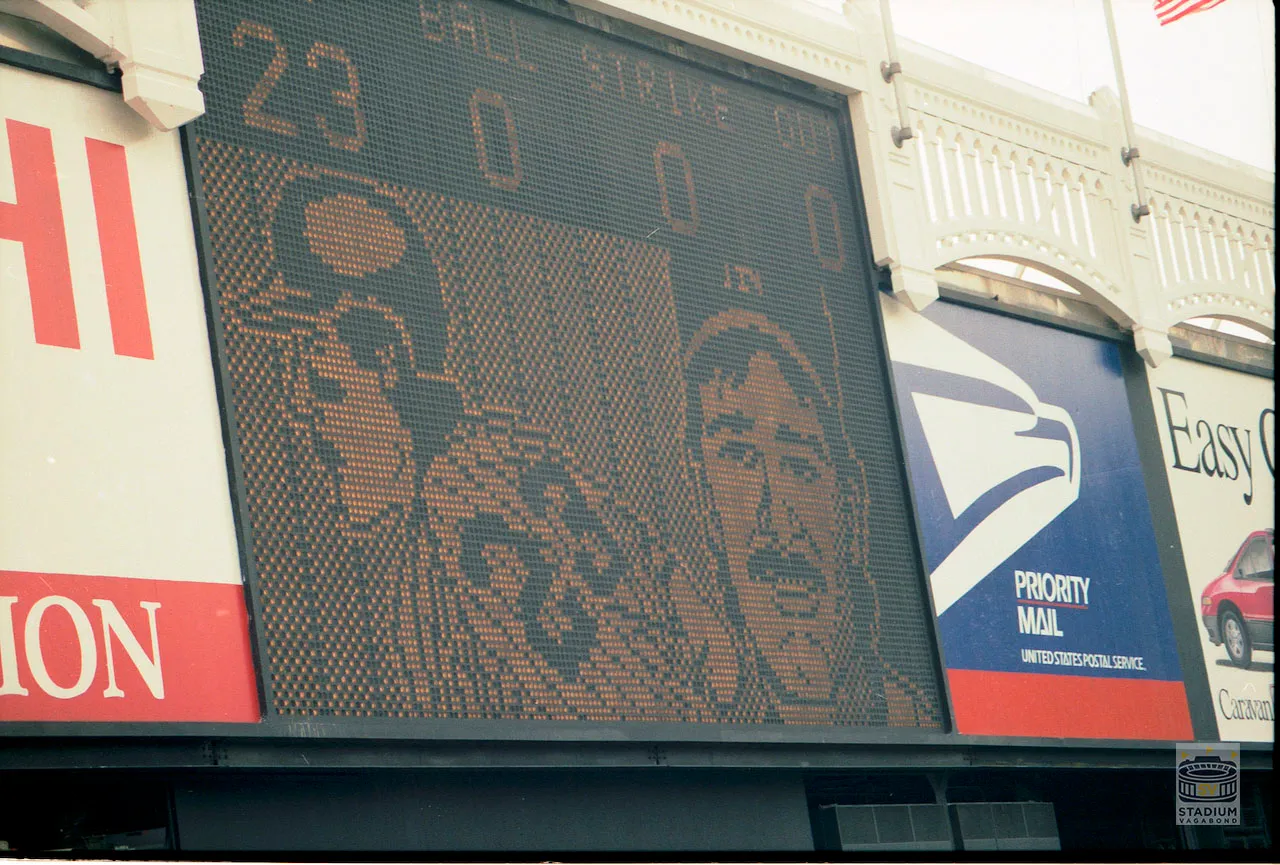






























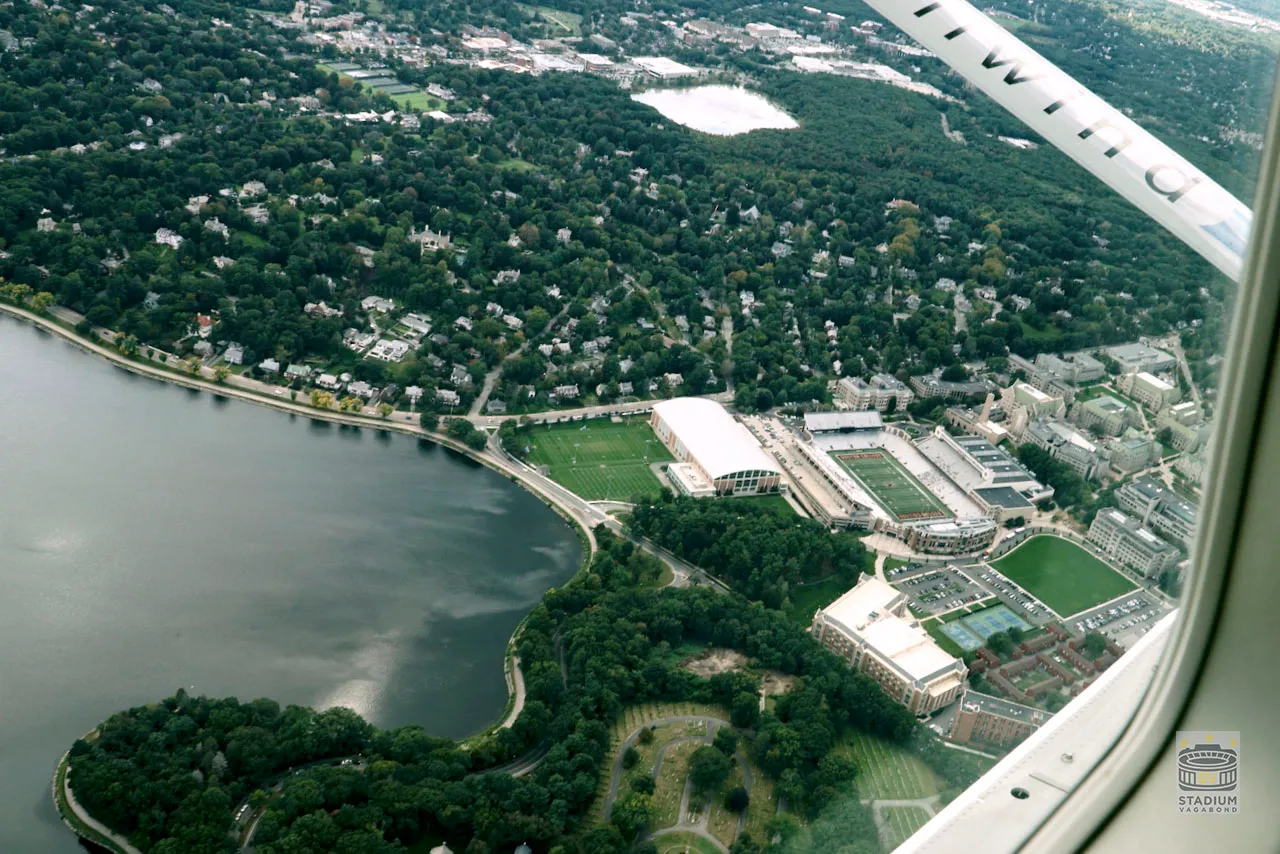

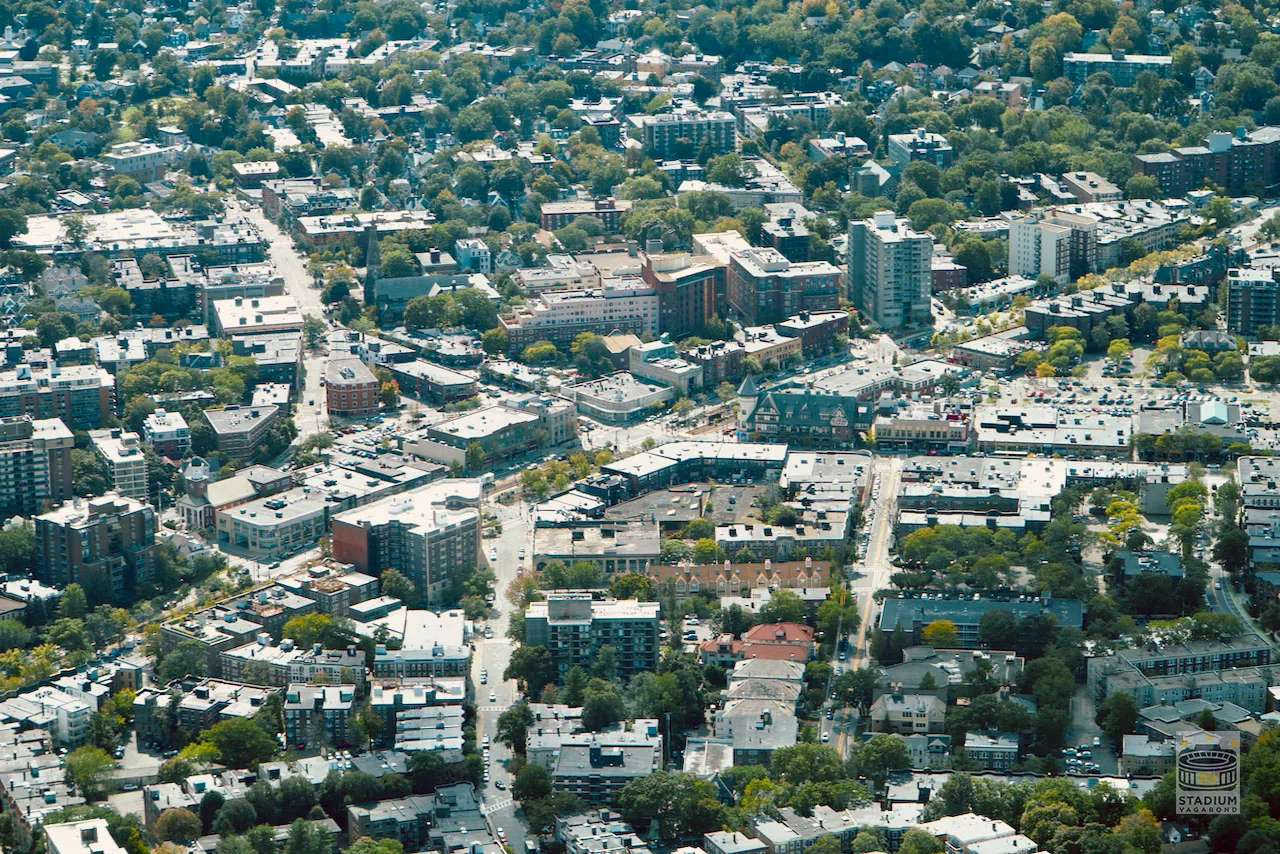

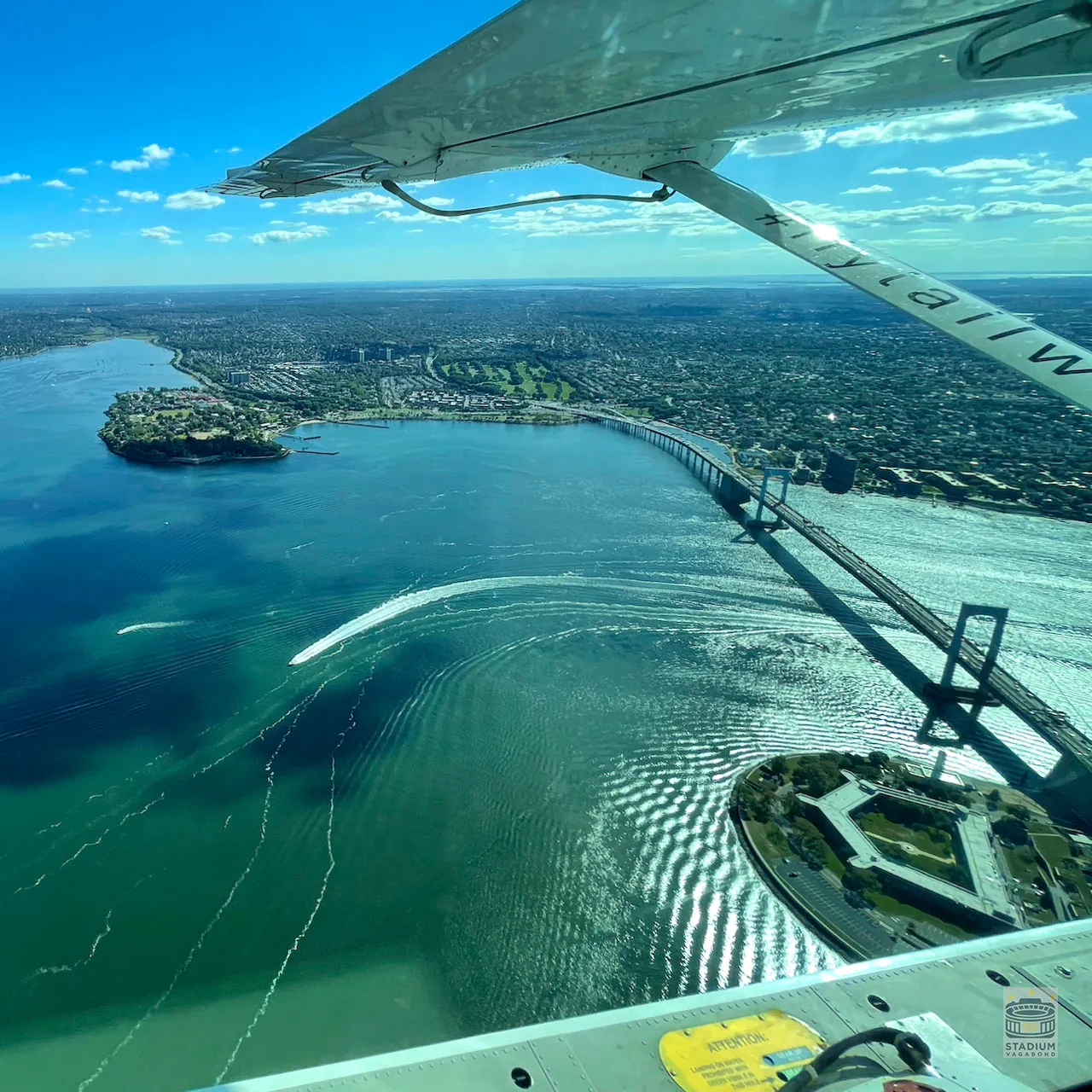



















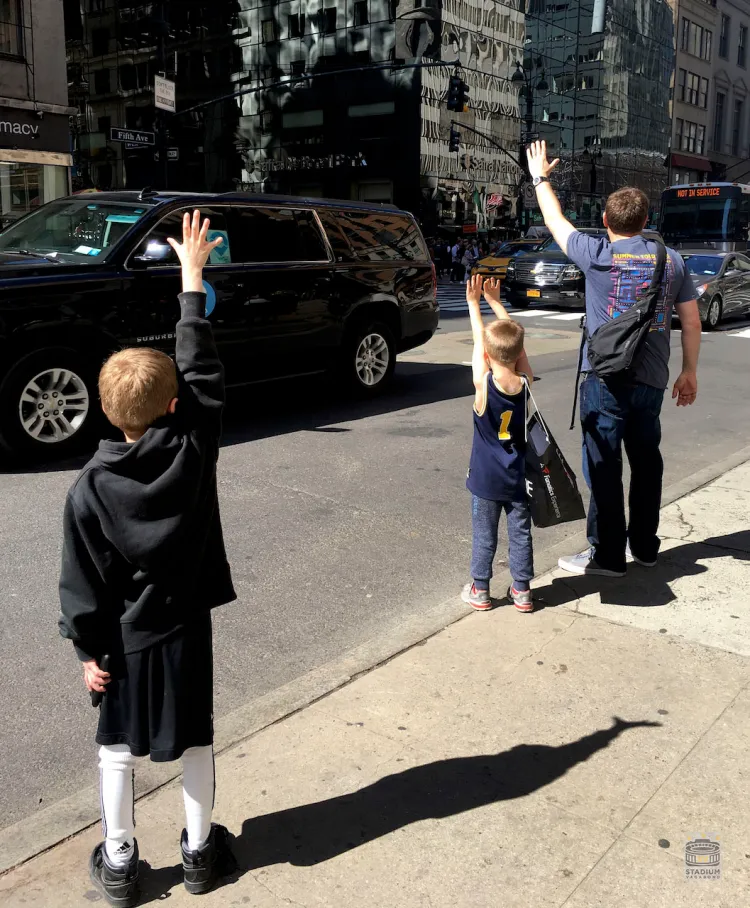






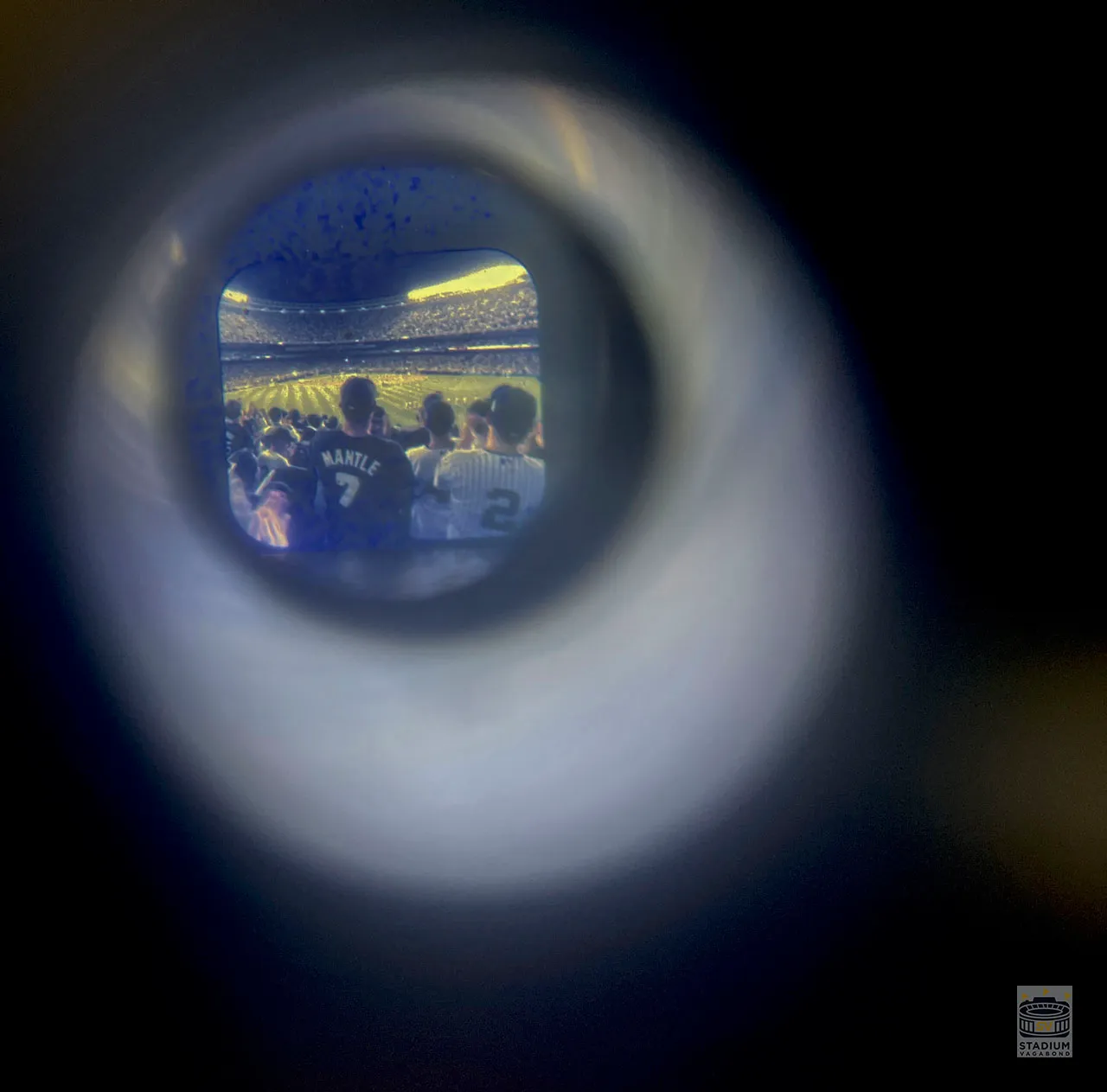















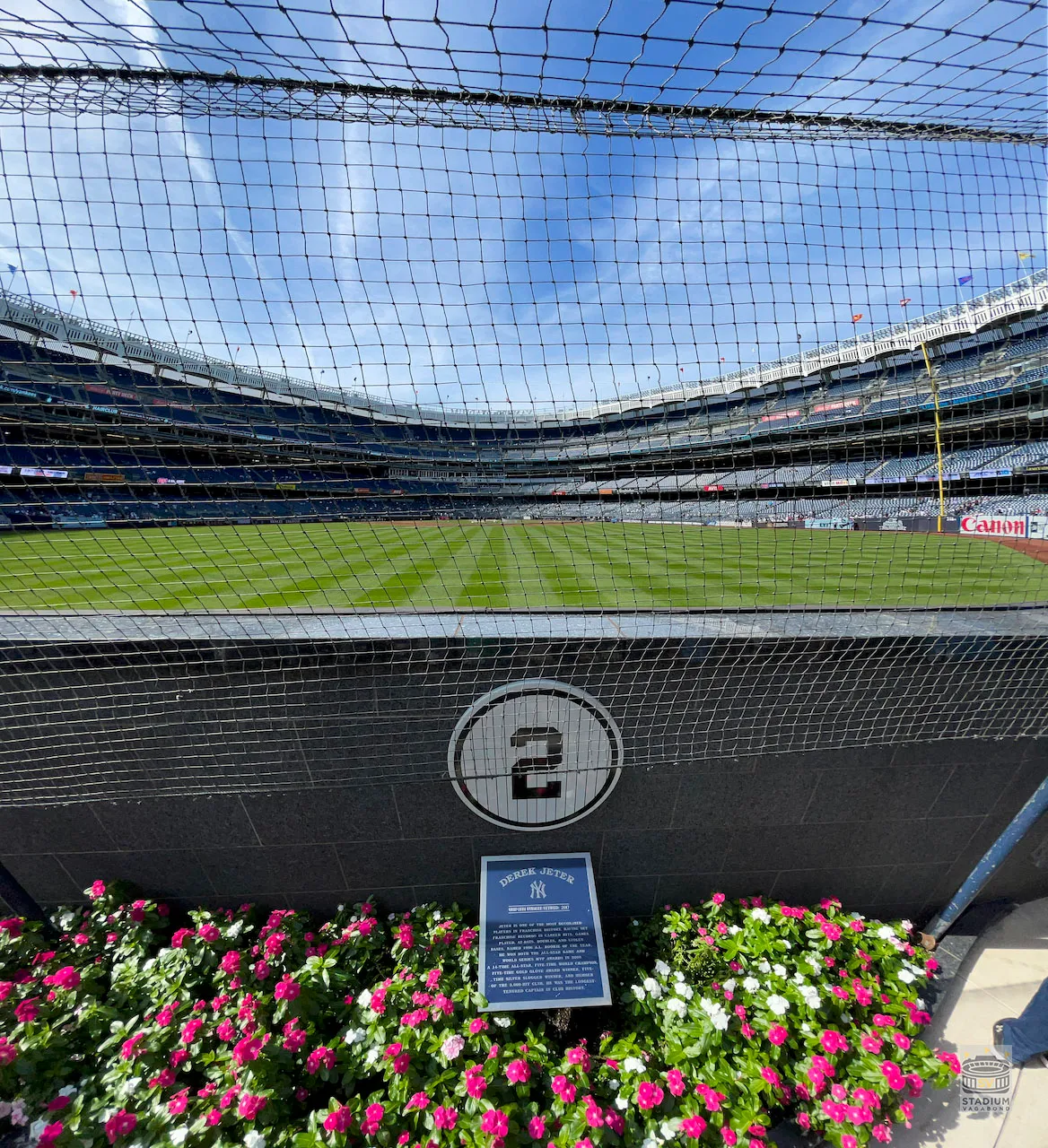


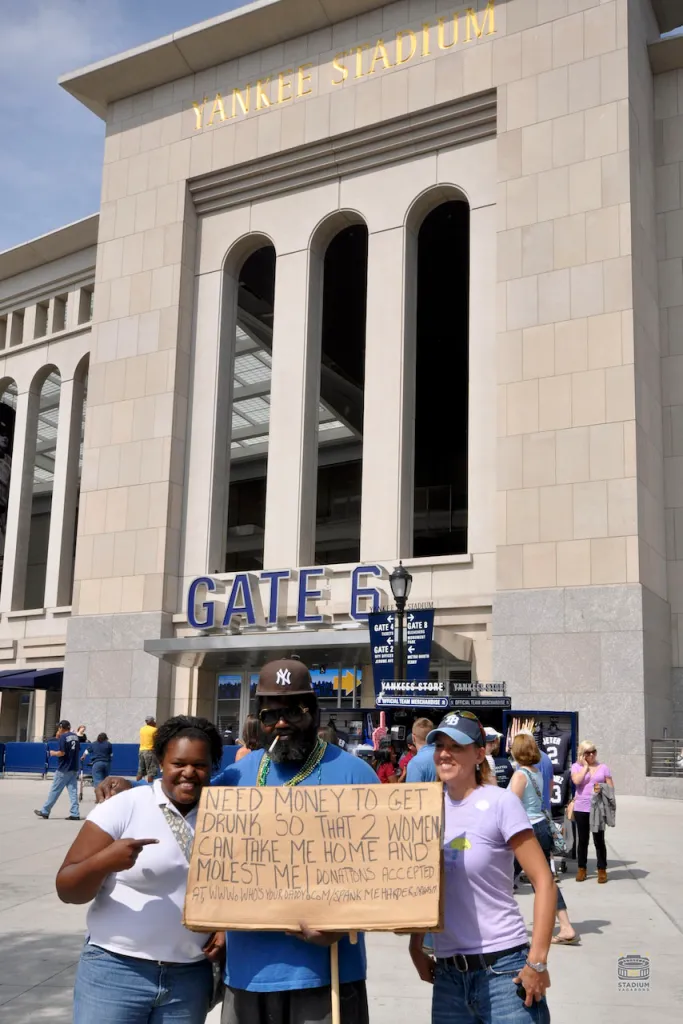




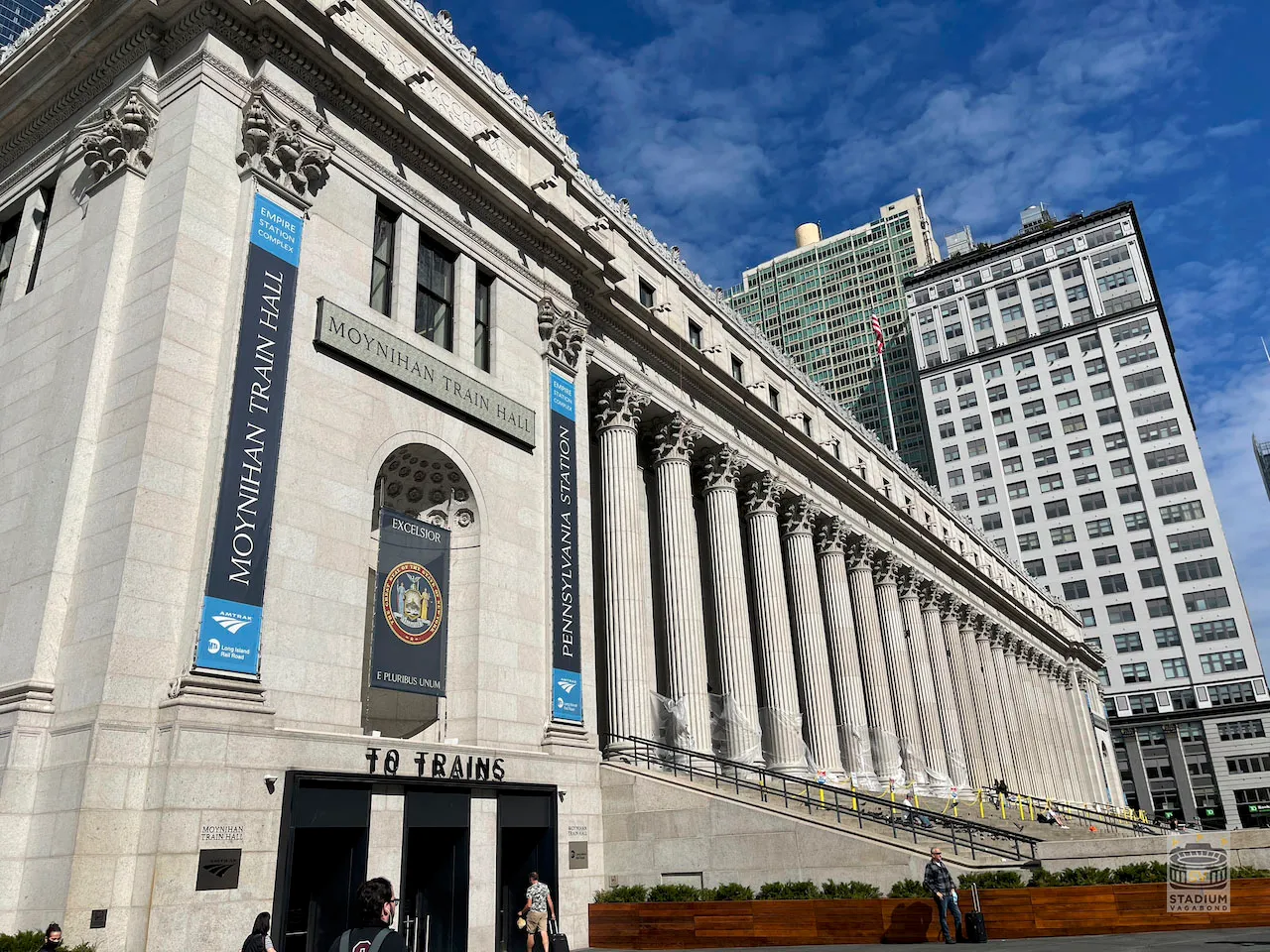



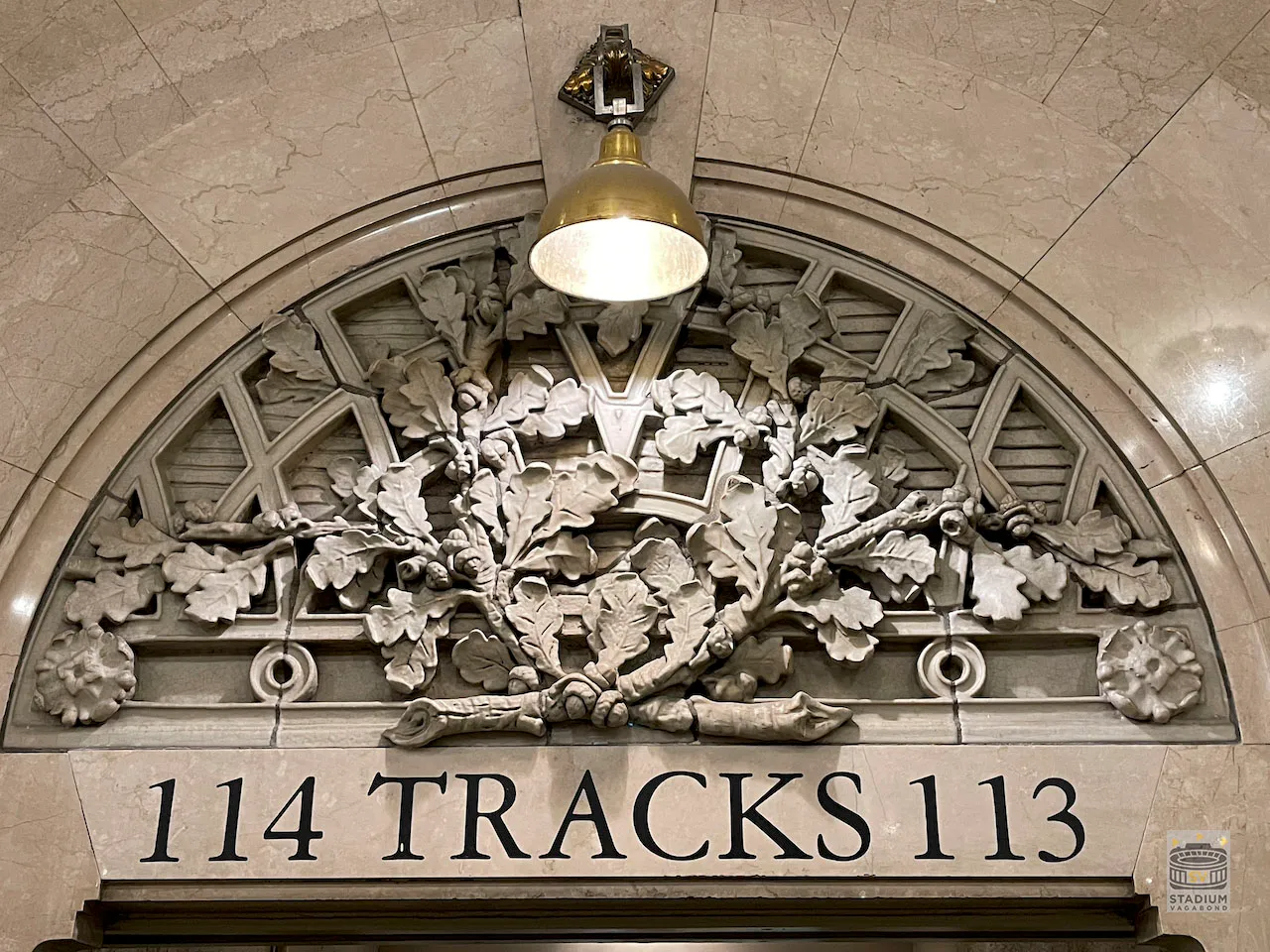

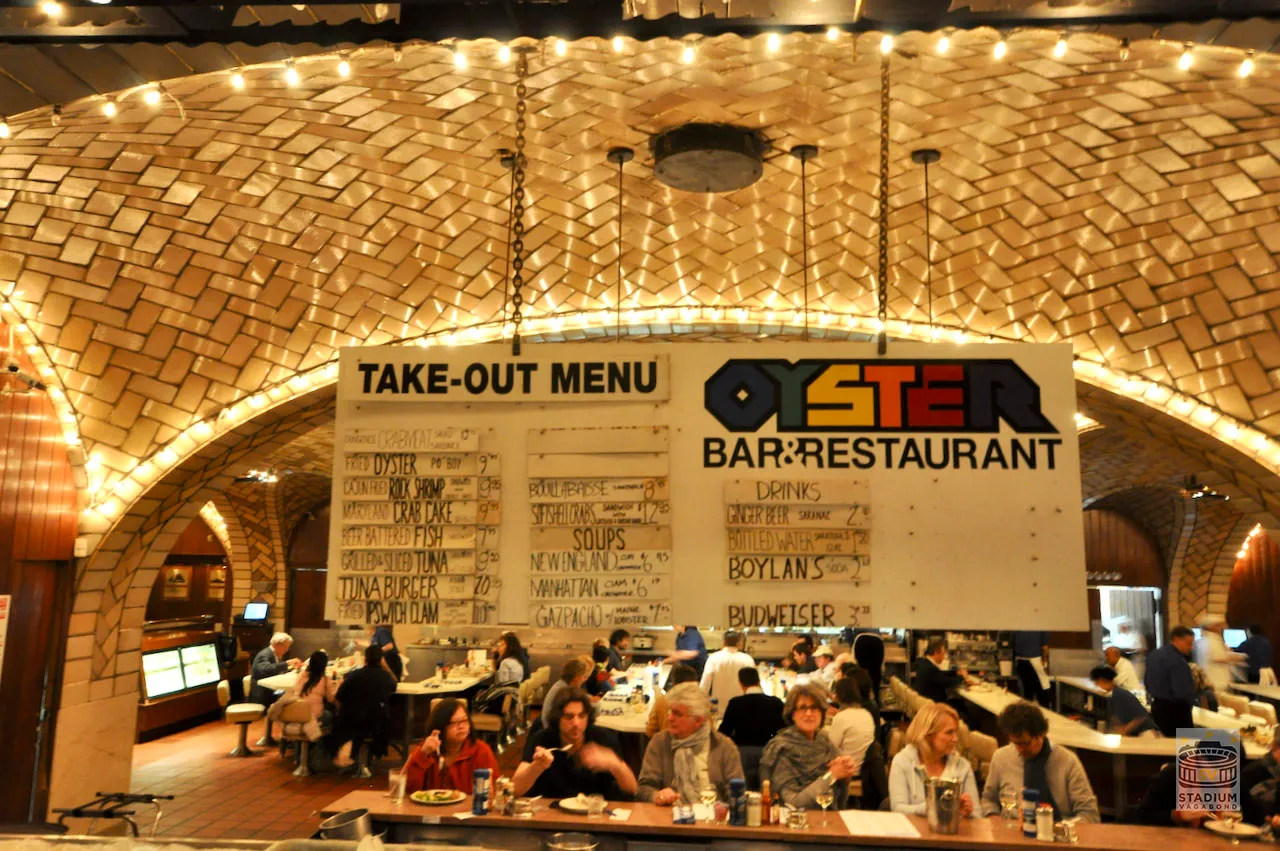

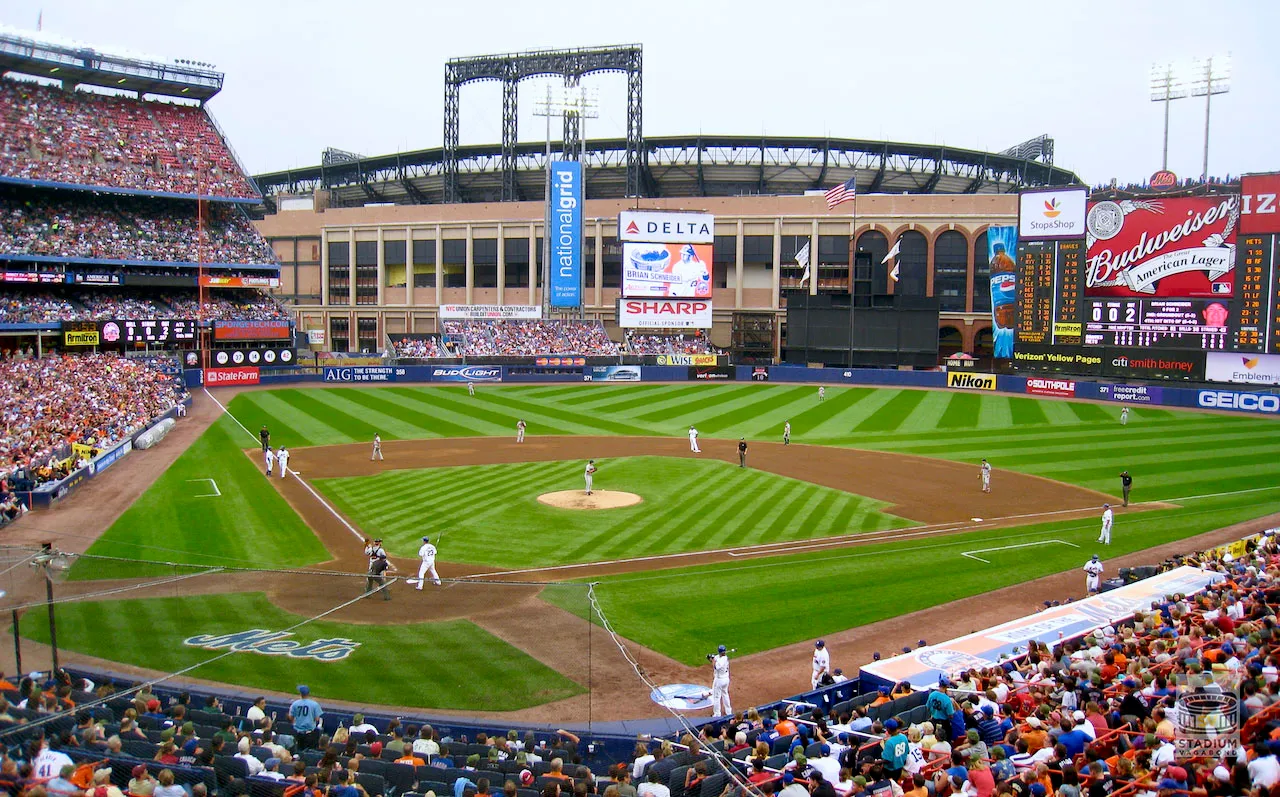


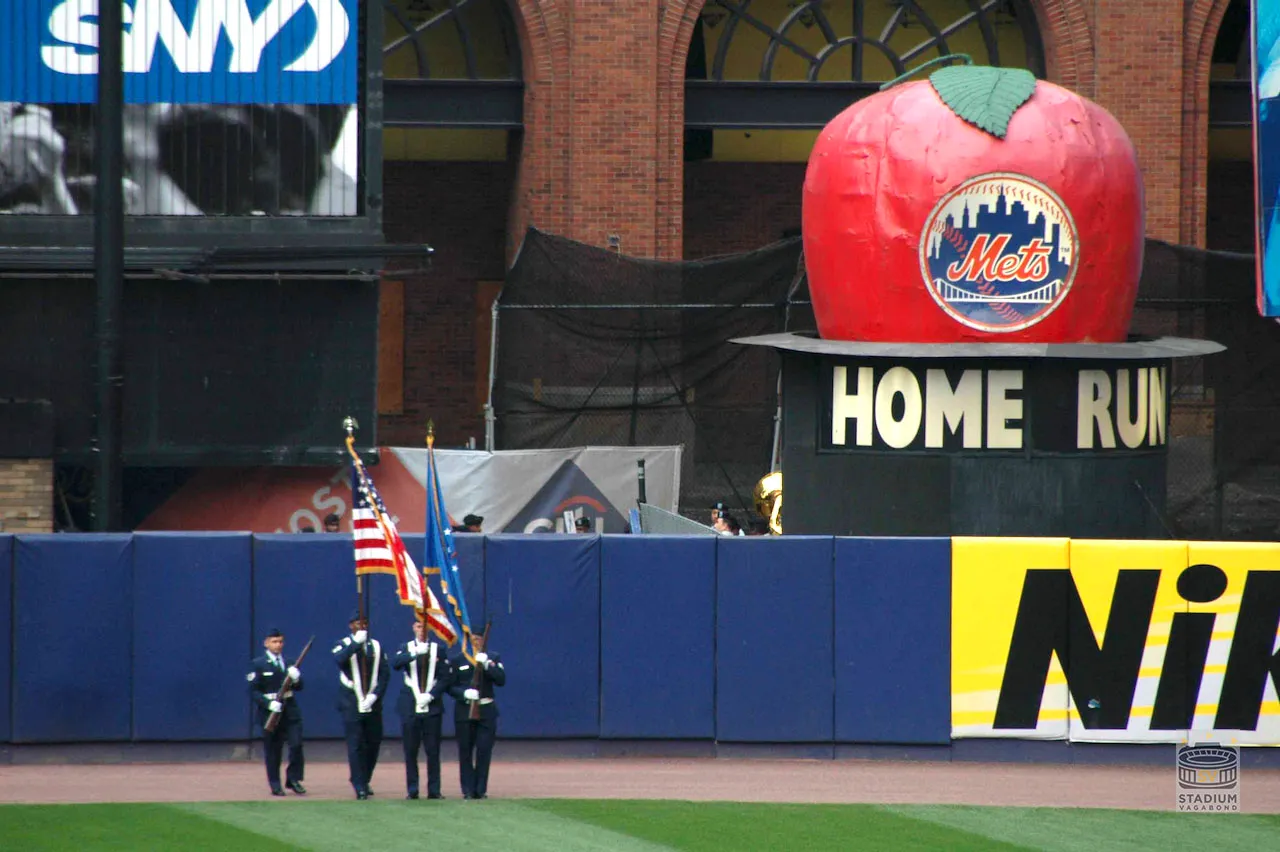















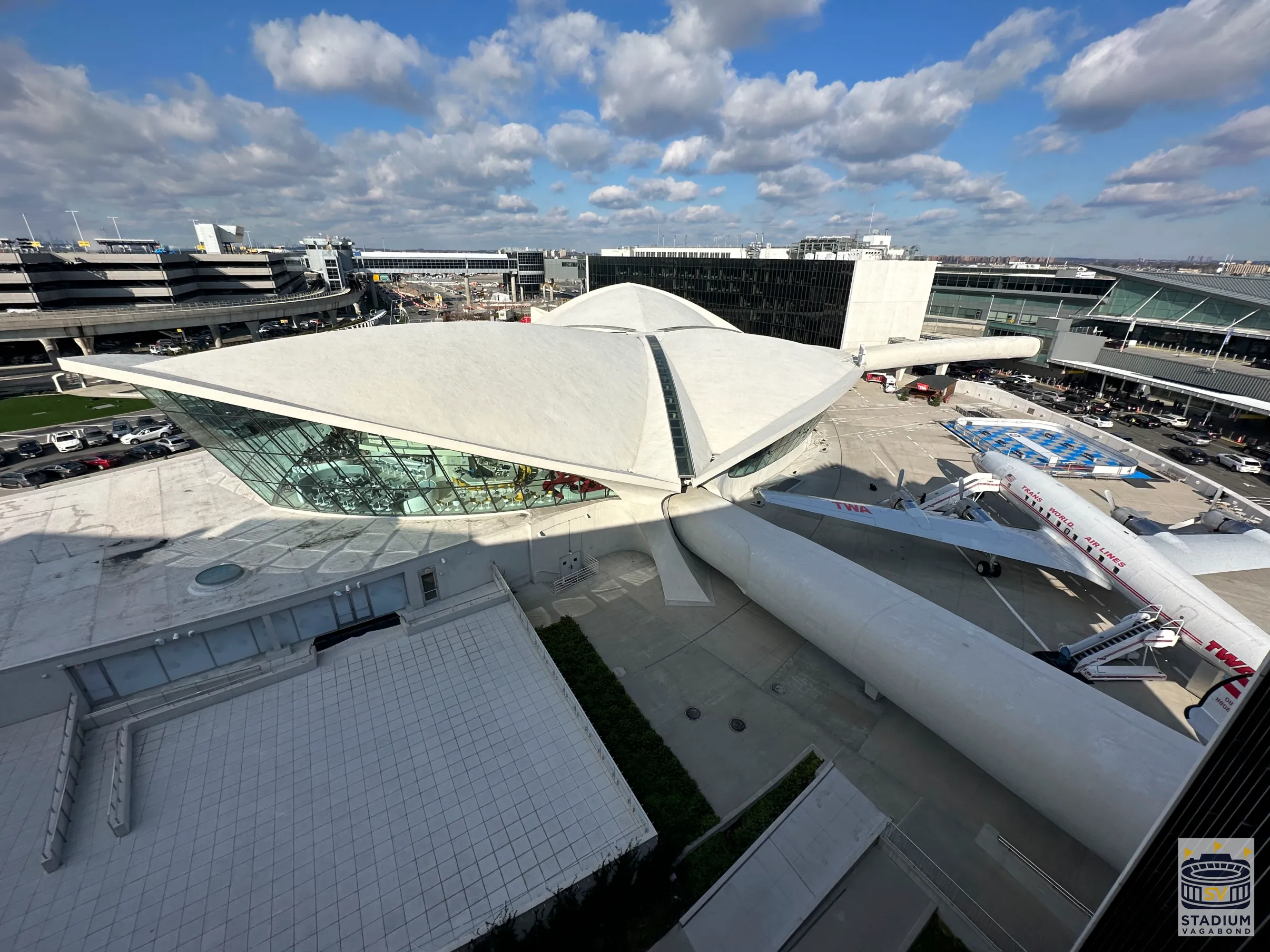













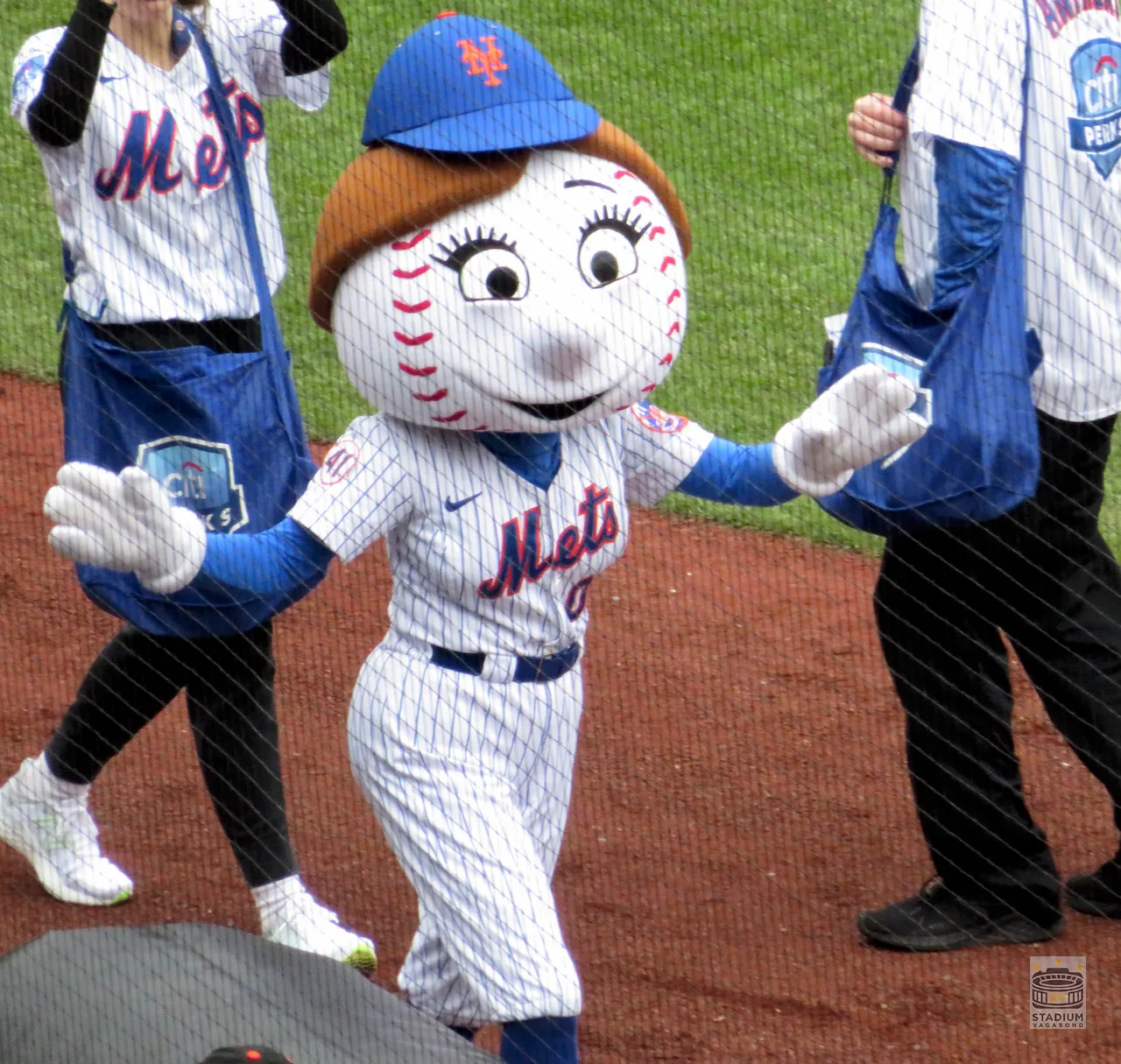


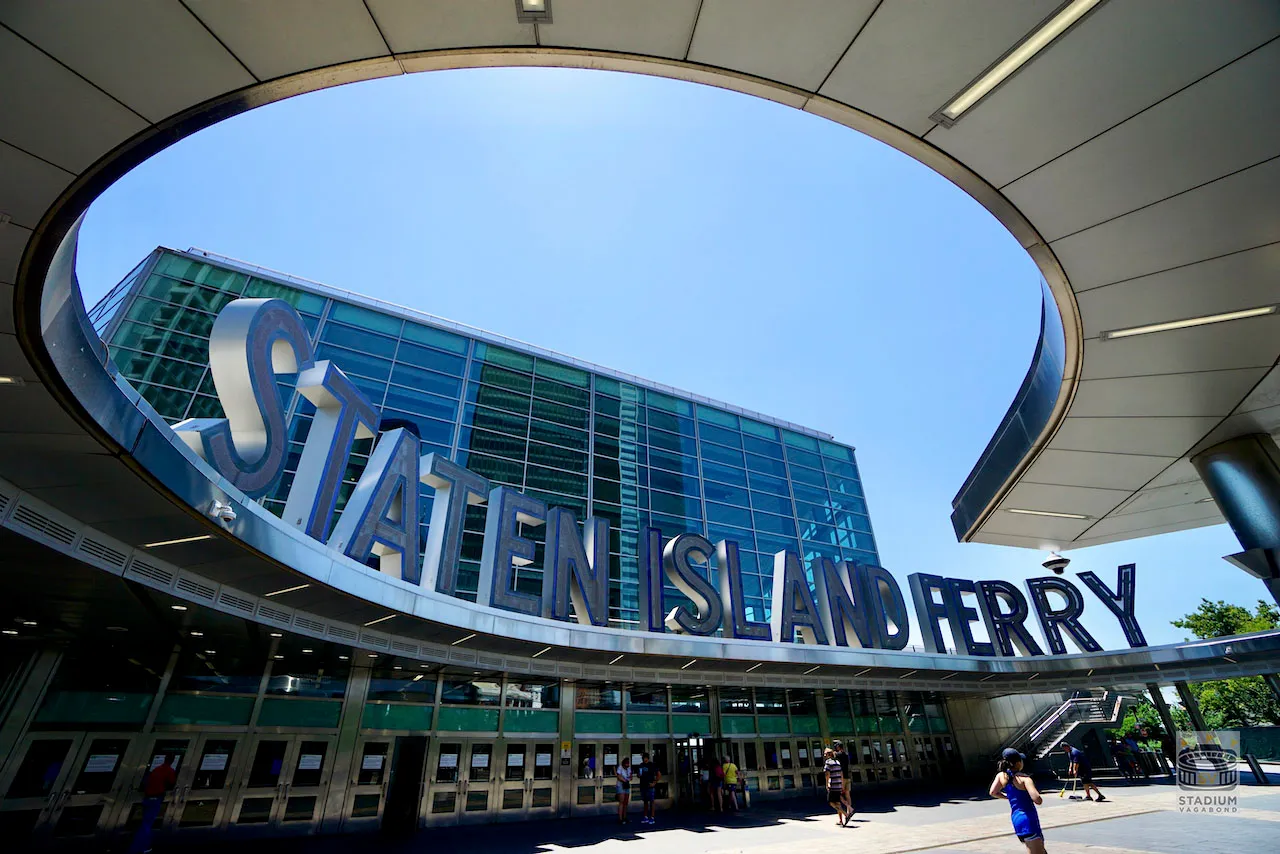















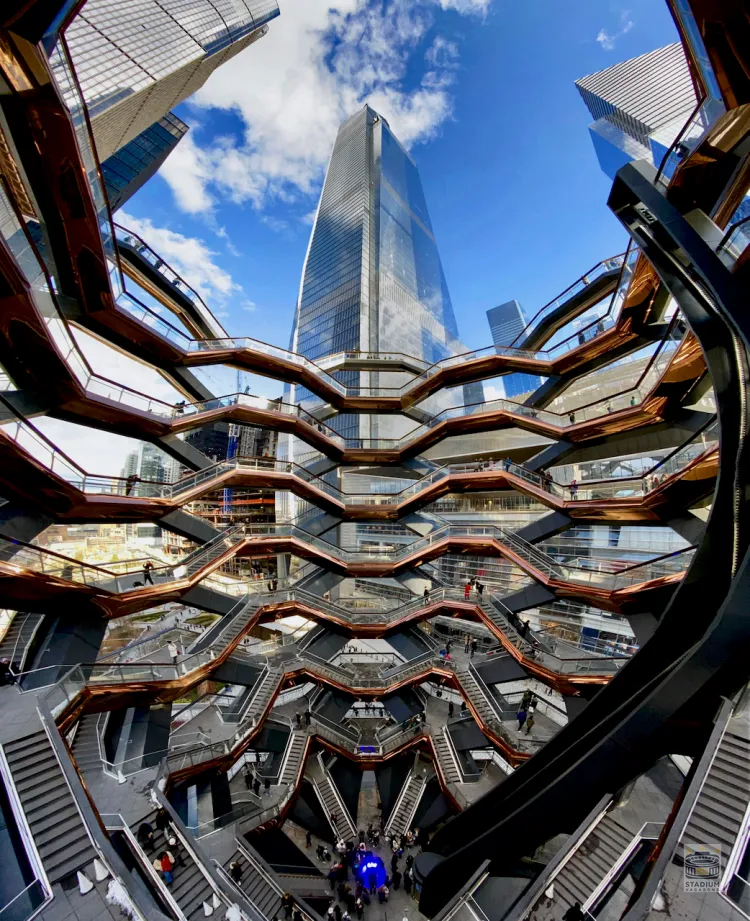











Amazing article! The insights here really capture the emotions behind the game. It’s just like when I play football games pc—every goal, every pass gives the same adrenaline rush that real football does.